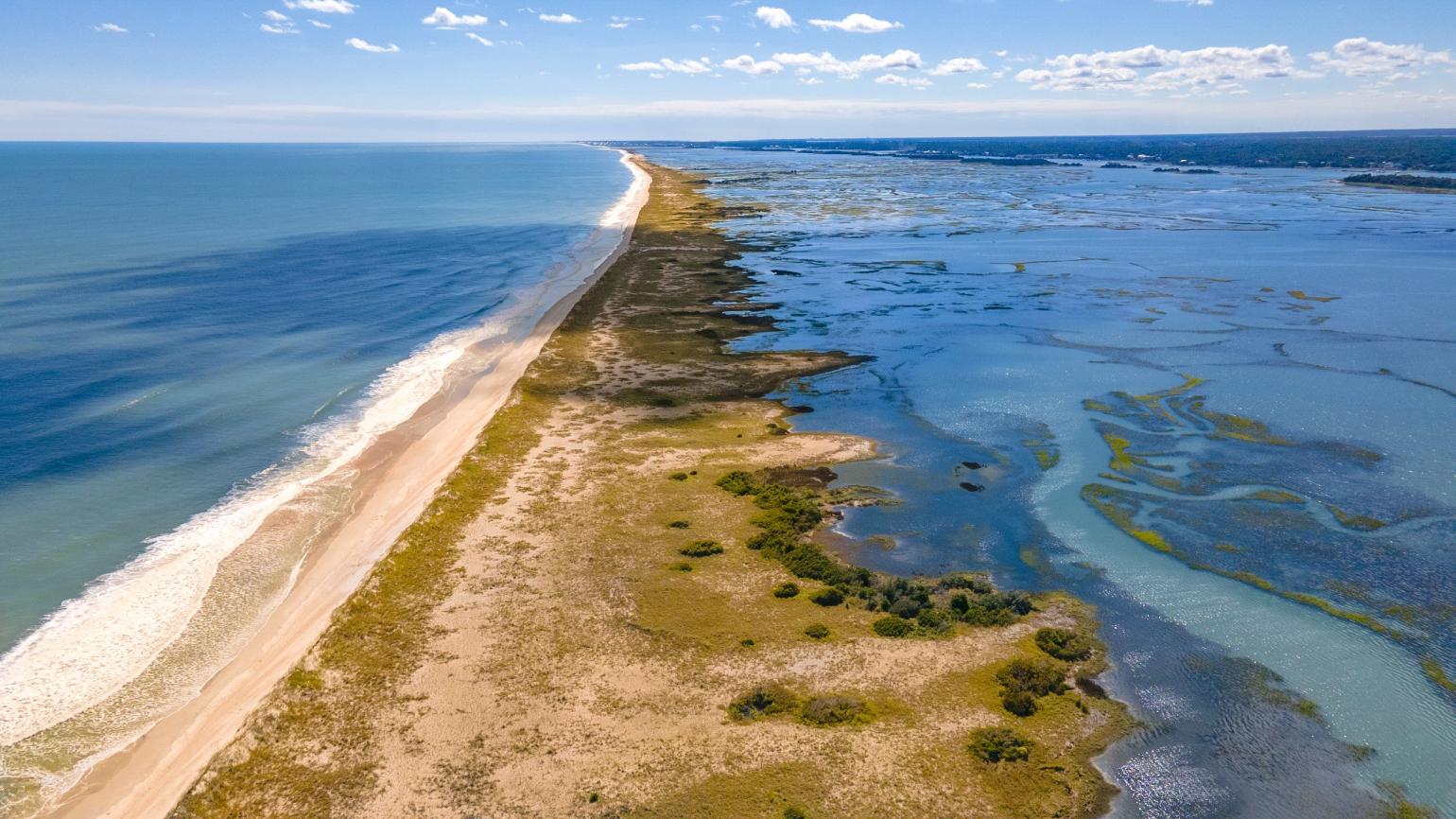Masonboro Island Reserve

The Masonboro Island Reserve is partnering with local non-profits and businesses to bring estuary education to schools in New Hanover County!
Natural Features
Masonboro Island is the largest undisturbed barrier island along the southern part of the North Carolina coast and is located approximately five miles southeast of Wilmington, in the most populous part of the North Carolina coast. The Masonboro site is bounded by the Atlantic Ocean to the east, the Atlantic Intracoastal Waterway to the west, Masonboro Inlet to the north, and Carolina Beach Inlet to the south. The Masonboro Island component is the largest site, at 5,653 acres, within the NCNERR system and was designated in 1991. This site is also a Dedicated Nature Preserve, authorized by G.S. 143B-135.250.
Take a virtual tour of the Masonboro Island Reserve!
Eighty-seven percent of the 8.4-mile long island is covered with marsh and tidal flats. The remaining portions are composed of beach uplands and dredge material islands. Masonboro Island is an essentially pristine barrier island and estuarine system. The various salinity patterns found in the extensive subtidal and intertidal areas along the sound side of the island support a myriad of estuarine species. The habitats found within this site include subtidal soft bottoms, tidal flats, hard surfaces, salt marshes, shrub thicket, maritime forest, dredge spoil areas, grasslands, ocean beach, and sand dunes. Loggerhead and green sea turtles nest on the beaches, where seabeach amaranth plants grow on the foredunes. All of these species are listed as threatened by the Federal Government. Species of concern are the American oystercatcher, black skimmers, Wilson’s plovers, and least terns that nest on the island. Sound sediments are home to two state watch list species – Hartman's echiurid and a polychaete worm in the genus Notomastus. The nutrient-rich waters of Masonboro Sound are an important nursery area for spot, mullet, summer flounder, pompano, menhaden, and bluefish. See a checklist of fishes found at Masonboro Island Reserve.
American oystercatcher conservation
Visiting the Site
Stay safe when visiting! Check out our safety tips here.
The Masonboro Island Reserve can only be reached by boat. There are public and private boat ramps in and near Wrightsville Beach and Carolina Beach and at the New Hanover County Trails End Park. There are also private fee ferry services to the reserve.
Boats usually land on the beaches along the north and south sound side of the island. Trails allow visitors to walk across the island to access the beach. Visitors may also walk down the undisturbed ocean beach for miles. The most fragile habitat areas, which can be easily impacted by visitors, are dunes, grassy flats, high and low marsh grass communities, and eelgrass beds. The public may utilize beach areas, open tidal flats and areas between dunes as long as the vegetation and habitat are not altered.
Be a responsible visitor: check out the reserve rules and policies before your visit.
Learn about recreation at the Masonboro Island Reserve
Camping at Masonboro Island
Primitive camping is allowed on the island. Campers should use areas that have obviously been camped previously. Camping on dunes and disturbance of vegetation are not allowed. Visitors need to pack out everything they packed in. All personal property must be removed from the island within 48 hours. See more information on how to be prepared for your camping trip.
If you plan to visit the island, you may want to read our Guide to Visiting Masonboro Island.
Site map
Site Management
